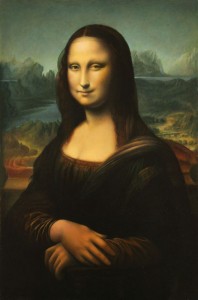With an interface that is so controlled, can there ever be something truly original? Moreso, is there something that cannot be reproduced by someone else?
The hand of the artist is forever attached to the artist and is unlike any other hand and their brain unlike any other persons. Yet, the computer and technology is made uniform, homogenous, so that the interface is the same for everyone that uses it. Is that where it all differs?
Is there no moral hindrance from using someone else’s code and modifying it? No! People do this all the time in different art forms. Animators draw inspiration and examples of gestures and movements from living animals and human beings. Even traditional artists look at work done by other artists attempt to reproduce the works of art. Artists can mimic what they find desirable in a piece of work and incorporate it into their own.

Perhaps it is that technology just makes it exponentially easier to mimic other artists’ work and thus eliminates this process for us. If I were to try and copy the Mona Lisa and add something of my own creation, then I would need to understand key concepts of light and form and also have the tools and paints Leonardo Da Vinci possessed at the time of its inception. This is immensely harder to simulate than it is to mimic a new media artwork since the both the tools and skills are easily accessible in digital art.


Some digital art tools, such as Processing and Maya, are actually free to users and students whereas paints and paintbrushes can run you a couple hundred dollars for a full set. Also, the skills needed to reproduce works of traditional art are significantly unattainable compared to that of digital media skills. There are many tutorials and help sites for programs such as Java, Processing, and Maya that allow users to learn and develop a skill set for reproducing digital work. On the other hand, where there might be tutorials on how to paint like Monet, there are far fewer of these kinds of aids and the interface is still subject to the artist. That is to say, there are specific codes and algorithms that have specific outputs, yet with a human hand, there is more subjectivity and chance for error.
The idea that the foundations of digital art are more objective and more easily accessible causes me to feel both anxiety and inspiration. There is something unnerving about thinking that anyone can see the code you used, copy it, run it, produce you artwork, then change one aspect and proceed to call it their own. I think that we live in a competitive era and it’s only natural to feel a little uneasy about this concept. Yet, it is also extremely inspiring! The fact that I can reproduce a work on my own computer or in my own environment gives me a sense of power, even if it is someone else code or idea. I think what’s important is that we remember that just because we can easily reproduce other artists’ works doesn’t mean that we are taking something away from them. They created the original concept and that may inspire us to create something similar, but with a completely different feel. I don’t think that anyone can say that their idea or artwork is completely original because everyone draws inspiration from something that leads them to their idea. In this day and age, everything around us is completely original, yet at the same time, true originality ceases to exist.

